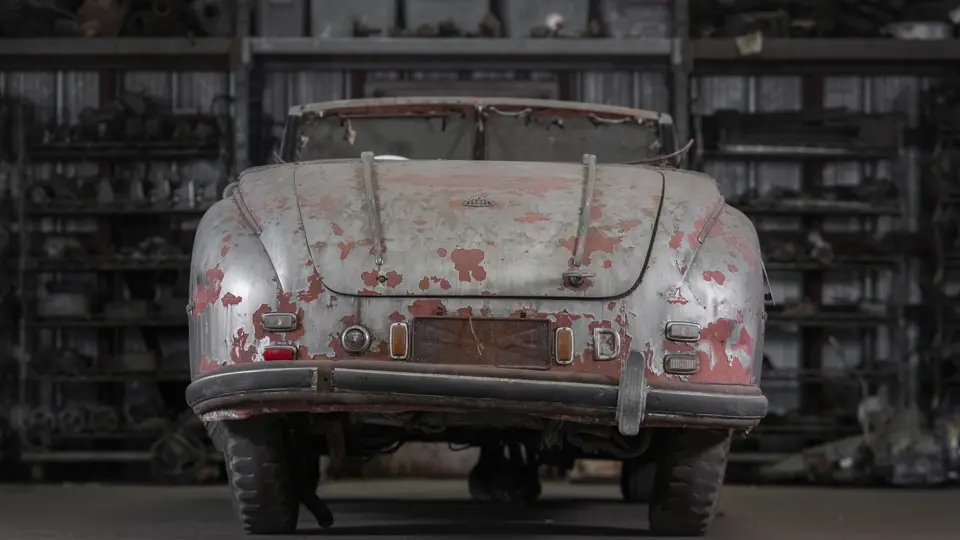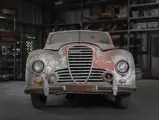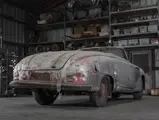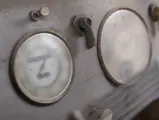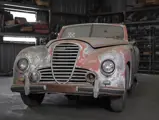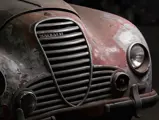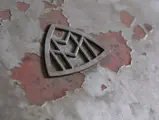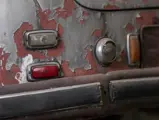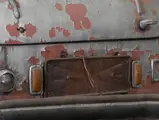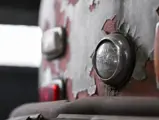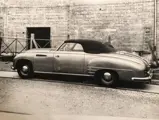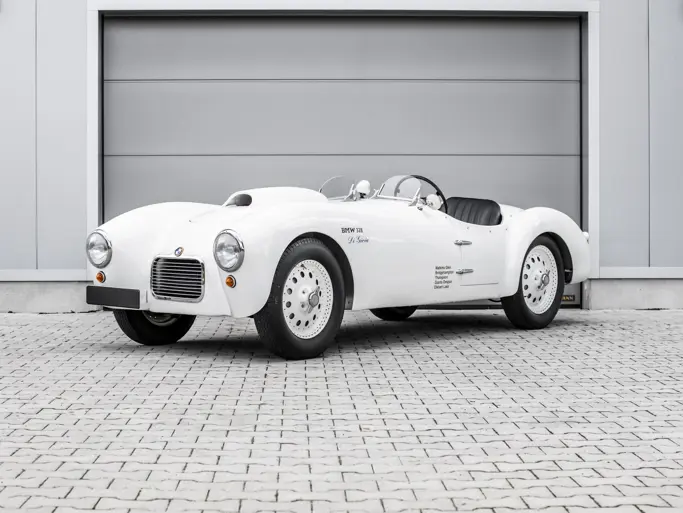Michael Graff Wolff Metternich’s Maybach Register indicates that this particular SW38, the prestigious top-of-the-line six-cylinder chassis considered the equal of its competitor Mercedes-Benz, was originally completed in 1939, and supplied with unknown coachwork to the Frankensteiner wine company in Frankfurt.
Following World War II, the car’s chassis was made available to Maybach and rebodied as one of five or six cars rebodied after the war, either under Maybach’s direct auspices or for a client. It was sent to local Stuttgart coachbuilder Wendler, which in 1948 built this handsome streamlined body. Of extremely modern ponton-sport lines, fully enveloping the chassis and with fenders fully integrated into the rest of the coachwork, the design nonetheless nods at pre-war tradition, including the low vee’d windshield and rear-hinged doors. The Register notes that the body was originally finished in bright green and gray, with black leather interior.
In the early 1960s, the Maybach was exported to the United States, and reportedly spent many years in storage in a shed on the East Coast; an early Maybach Register records its owner as Peter Shagnea of Bloomfield Hills, Michigan. Finally, around 1981, following a brief attempt at restoration, it was acquired by Rudi Klein and has remained hidden behind the gates of his yard ever since.
Presently the car awaits a restoration in earnest. It retains much of the Wendler bodywork, as well as the chassis and drivetrain, though much of the interior has been stripped and discarded. Nonetheless, the beauty of the car appears evident even in this condition, and it must be tempting to resurrect this unusual blend of pre-war and post-war cues for a new generation. It is a wonderful piece of ingenuity from an era when new chassis were hard to acquire, but design talent and dreams were abundantly at hand.


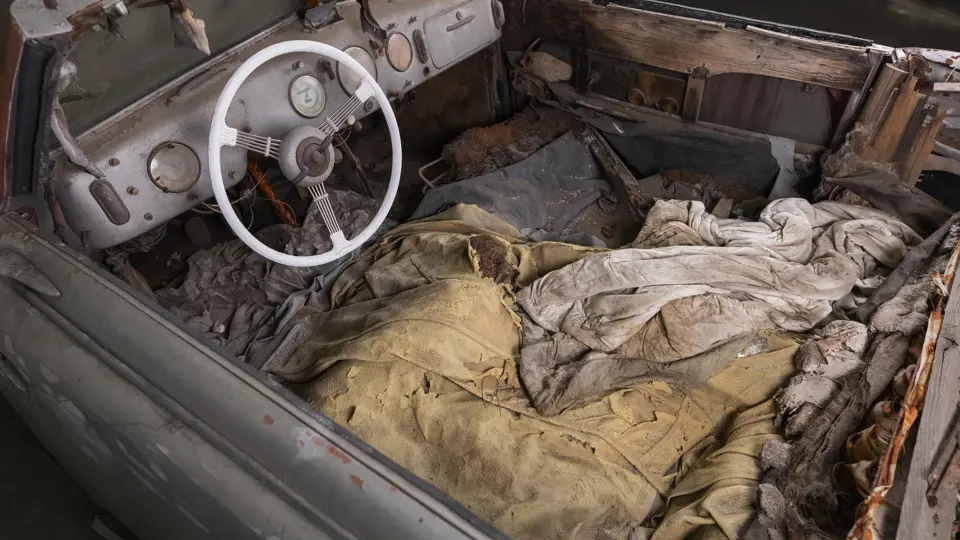

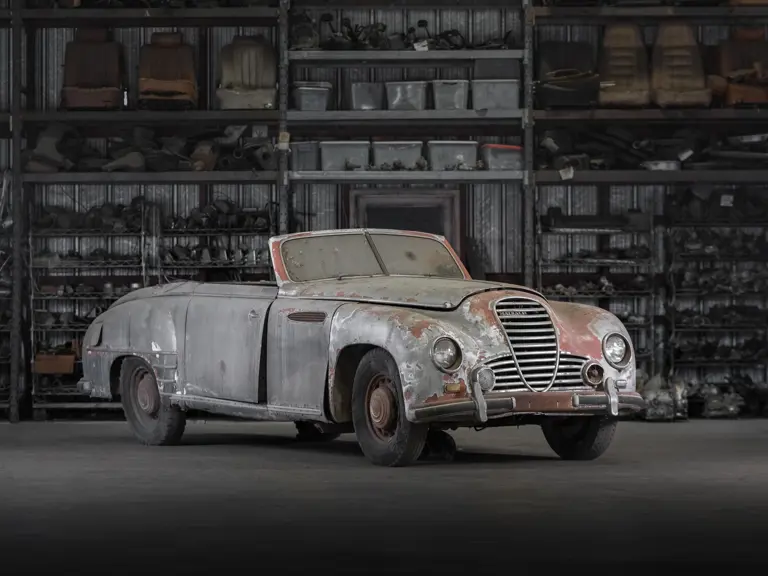
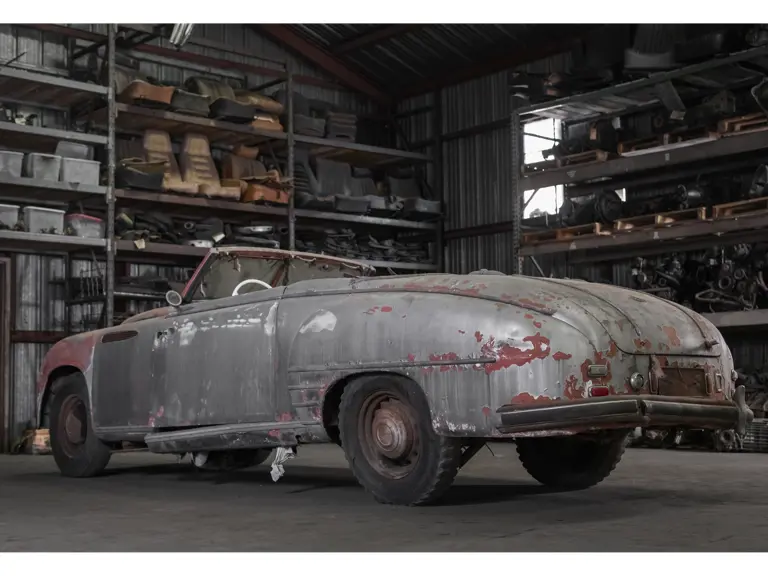
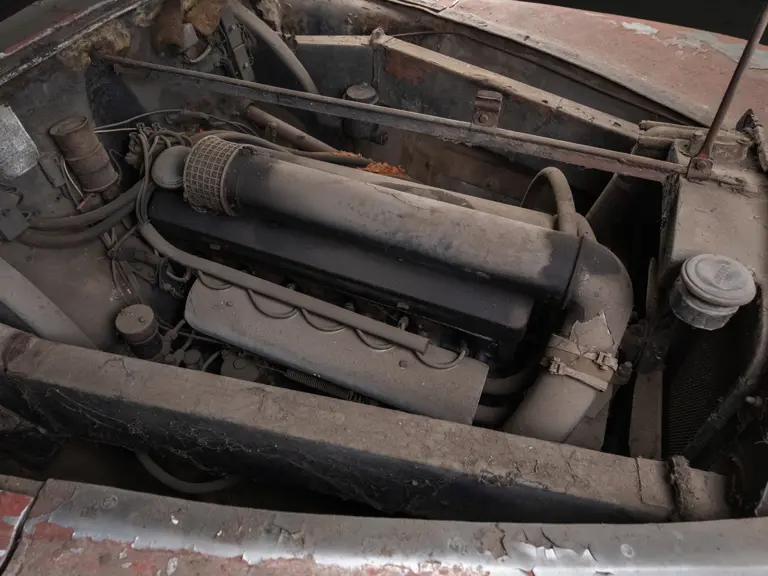
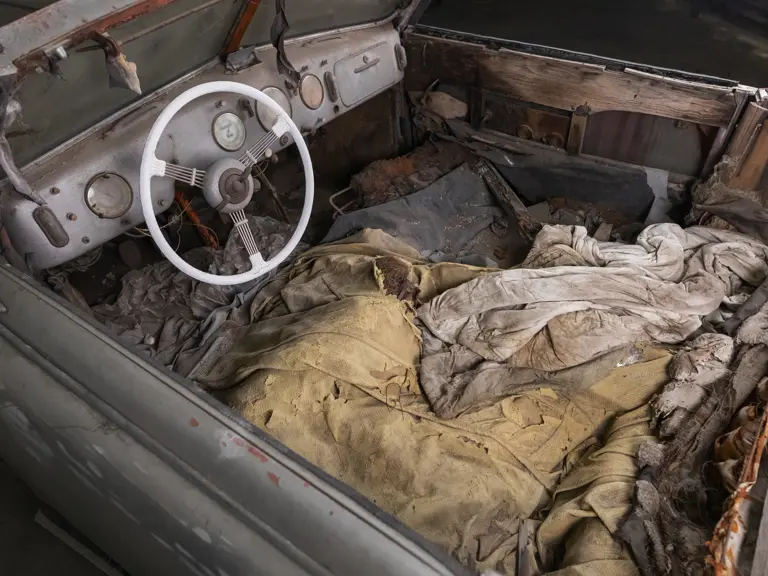



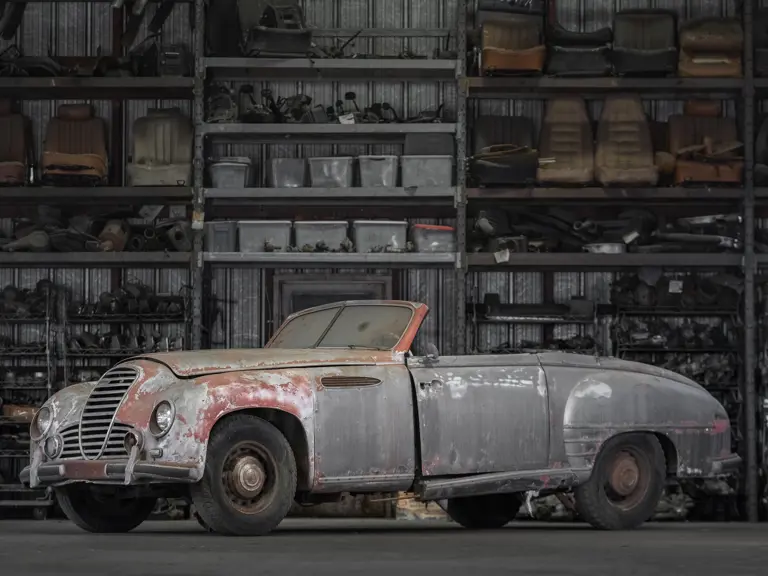







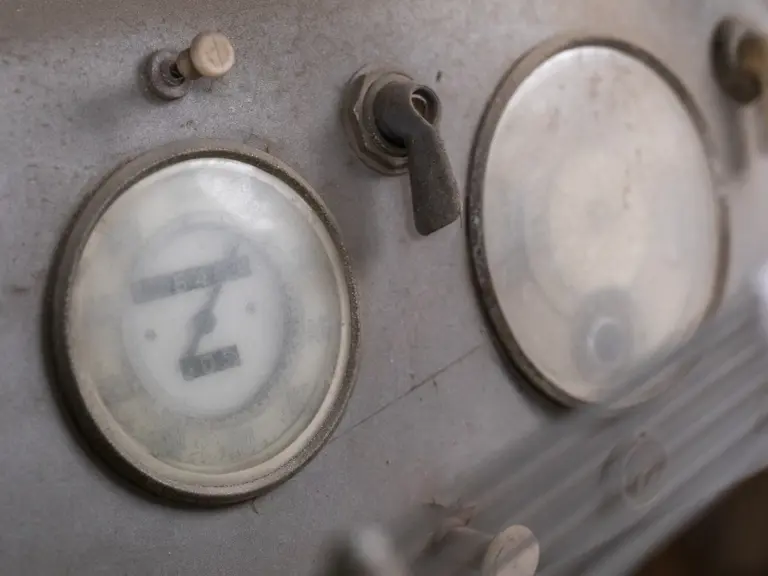
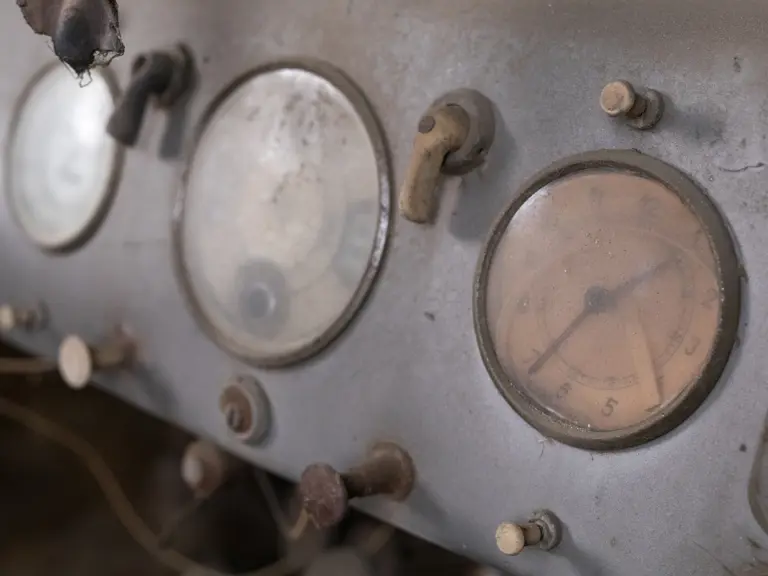


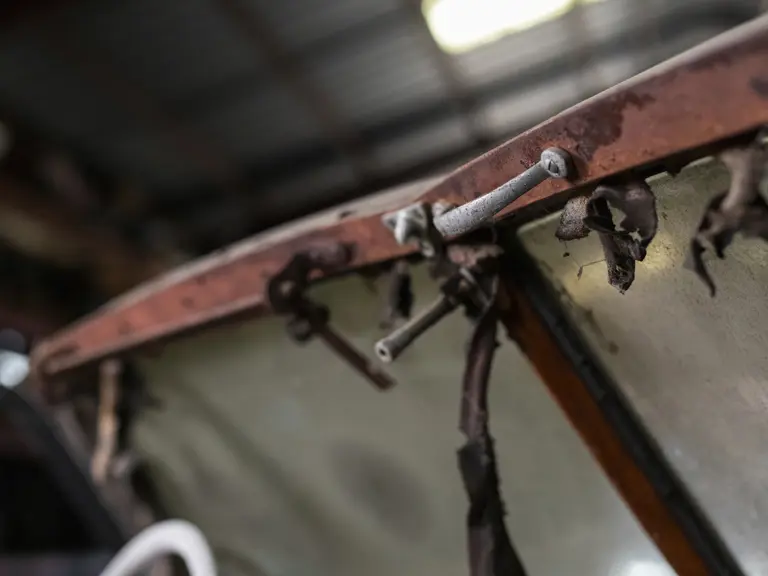



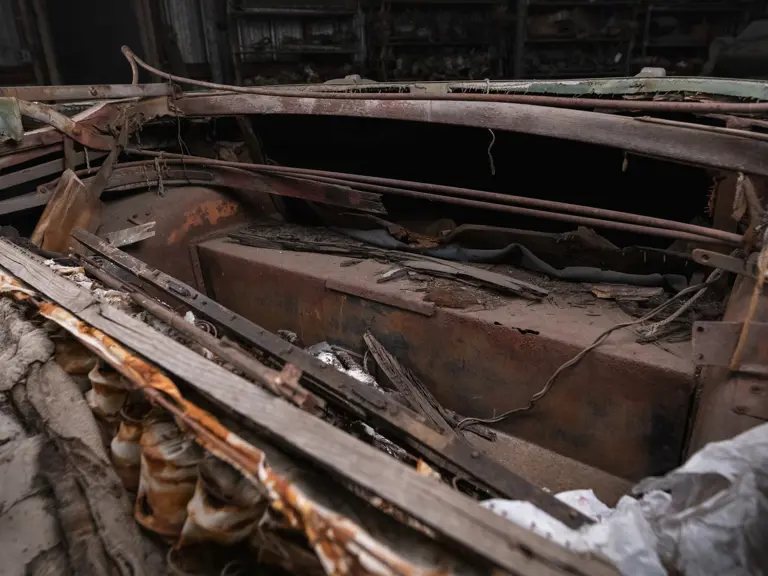

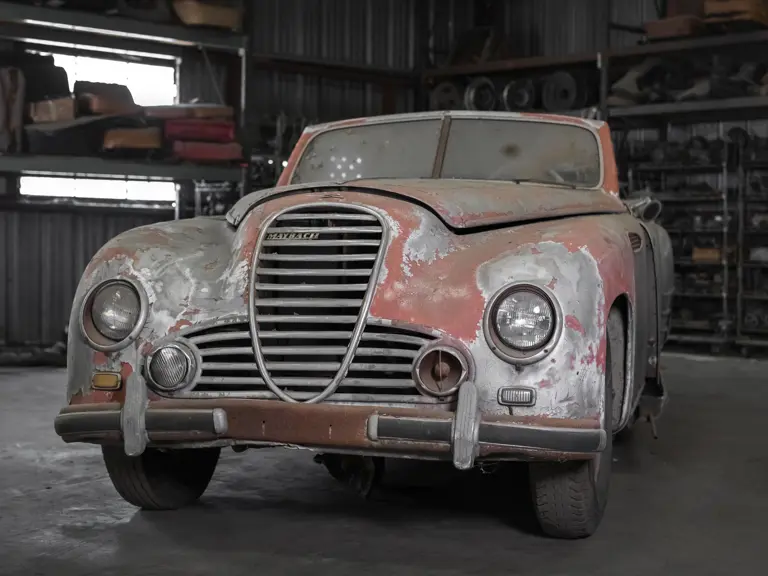
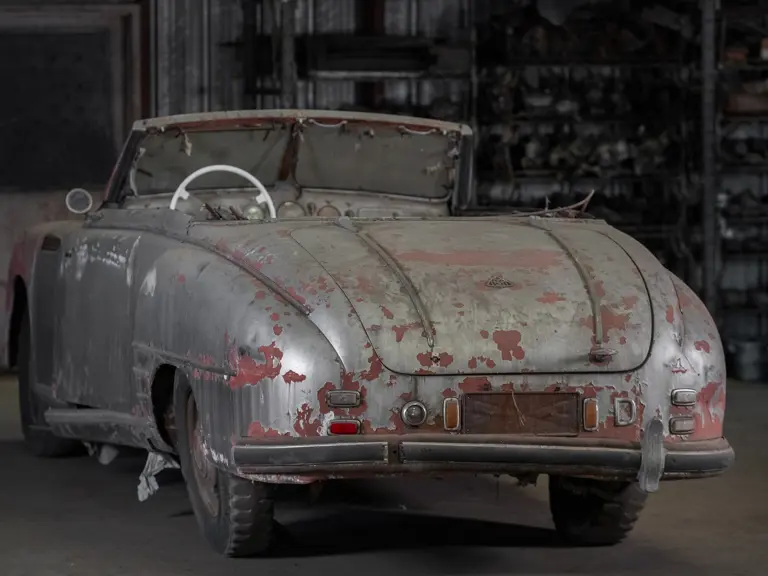








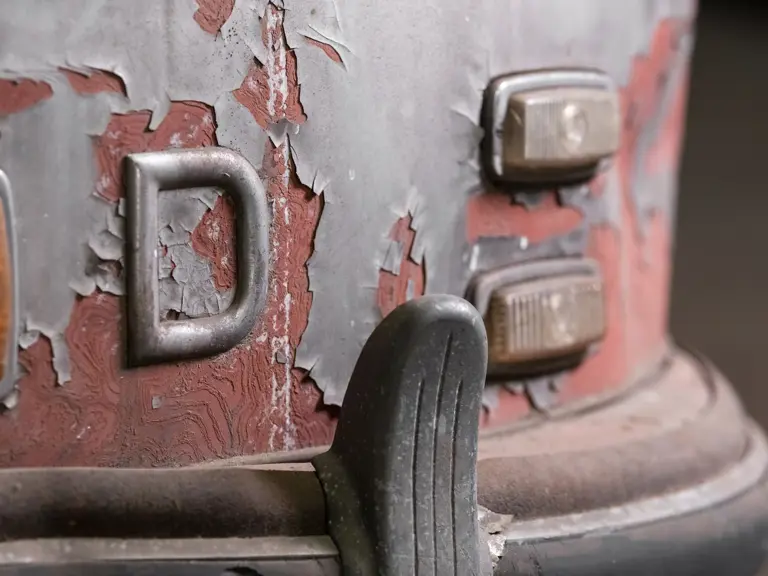
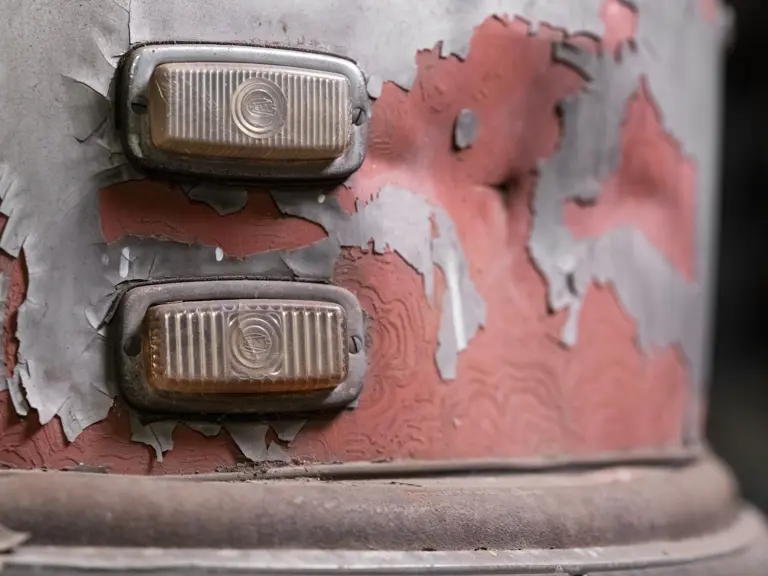
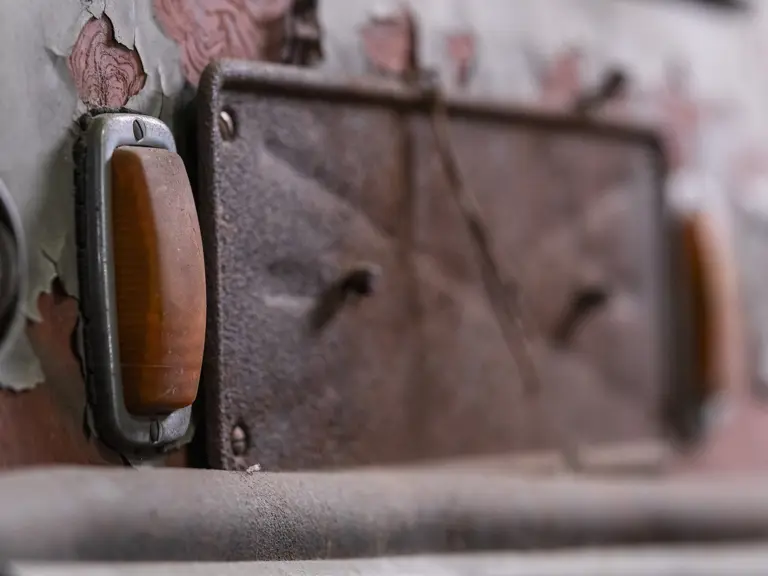
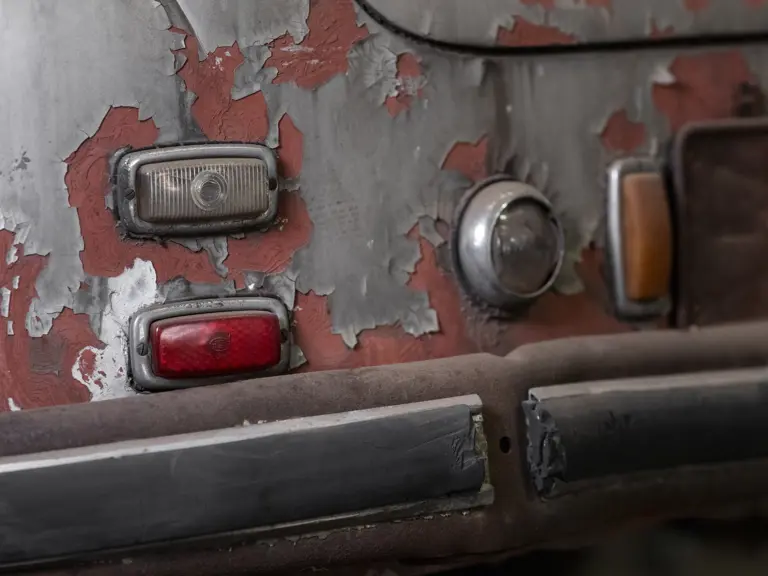
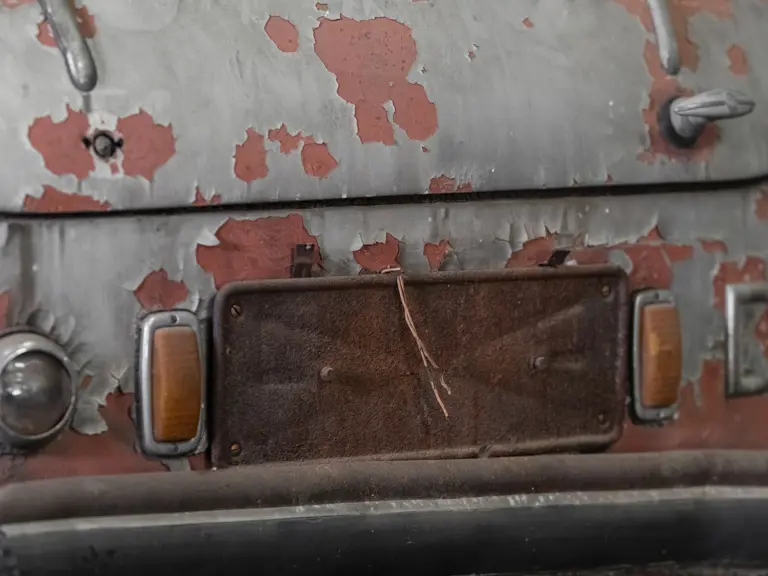
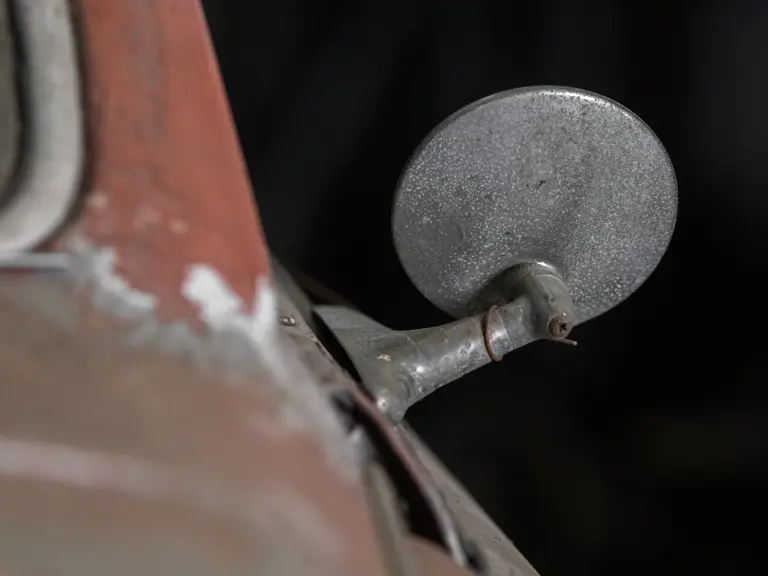











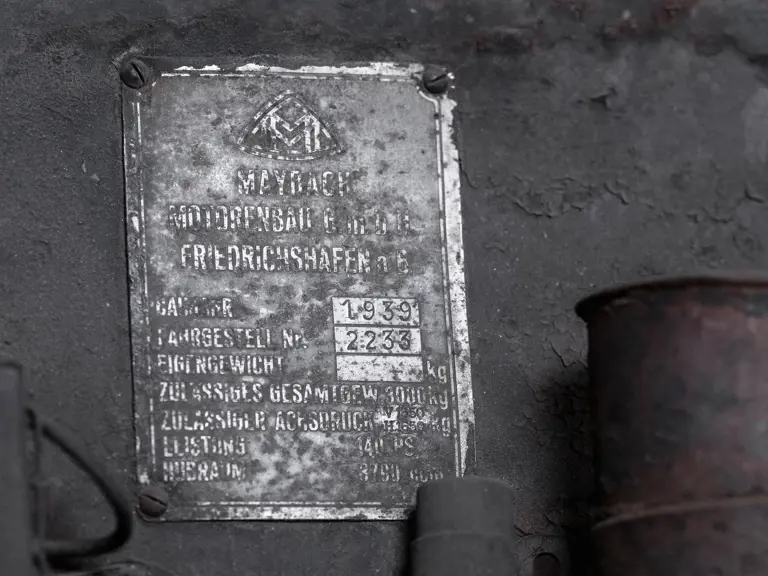
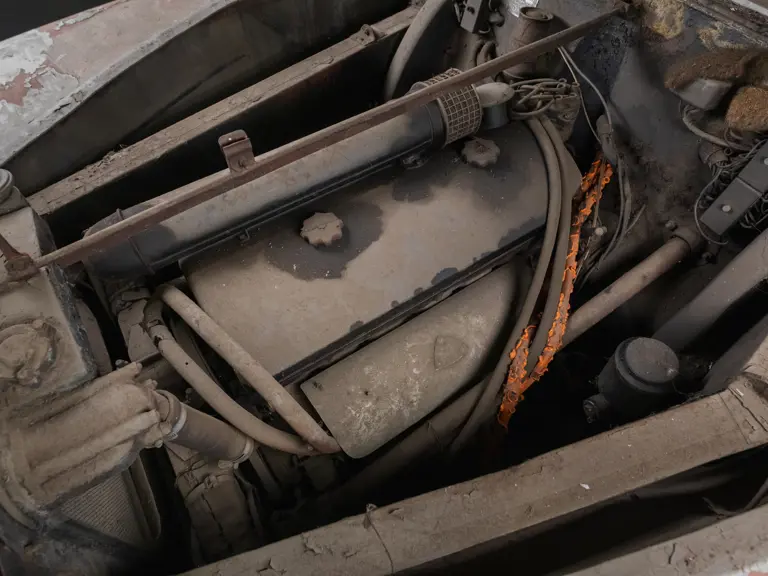
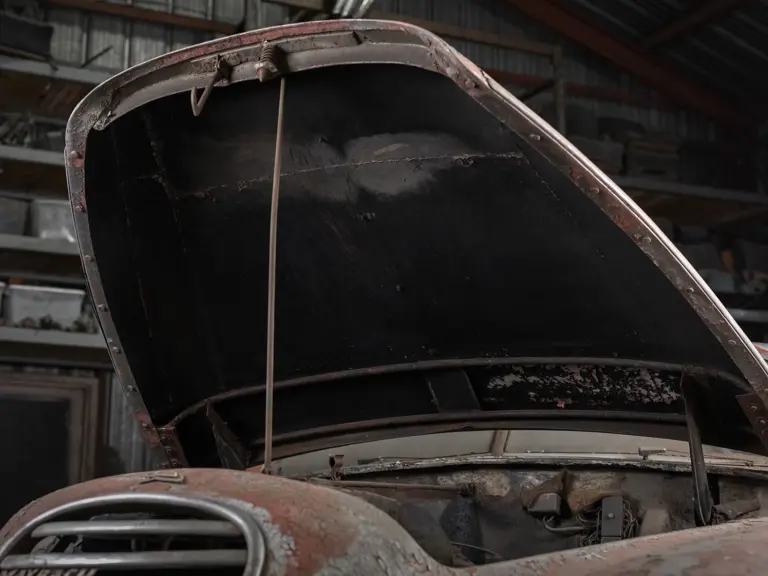







 | Los Angeles, California
| Los Angeles, California

